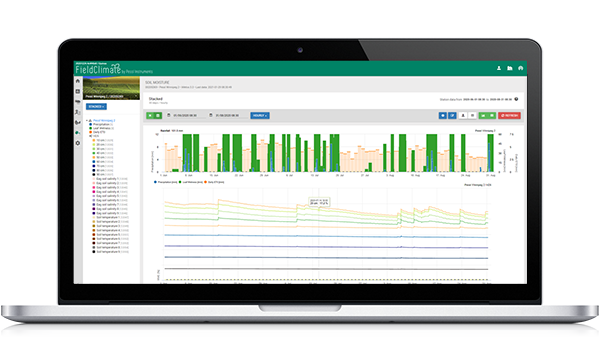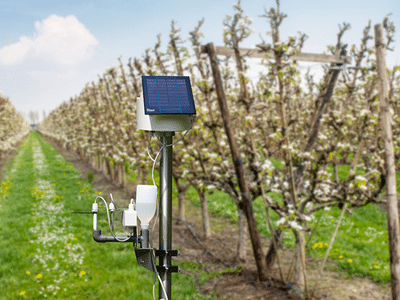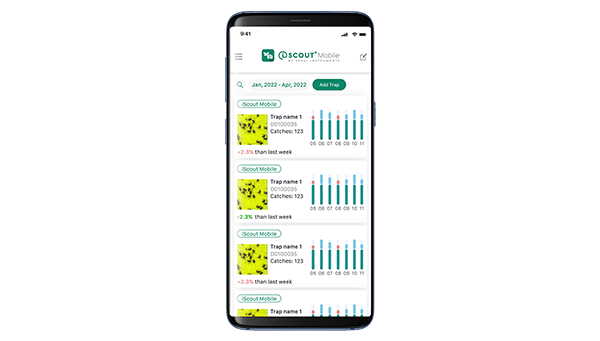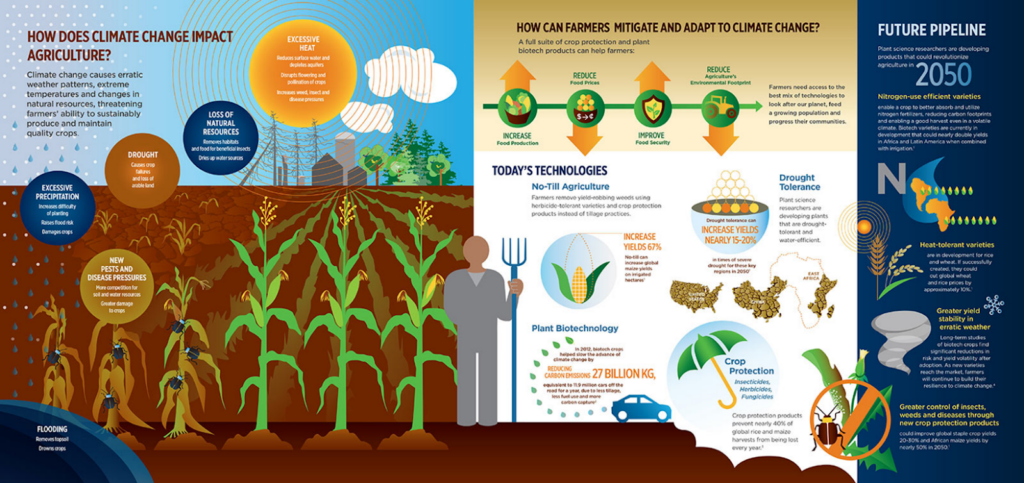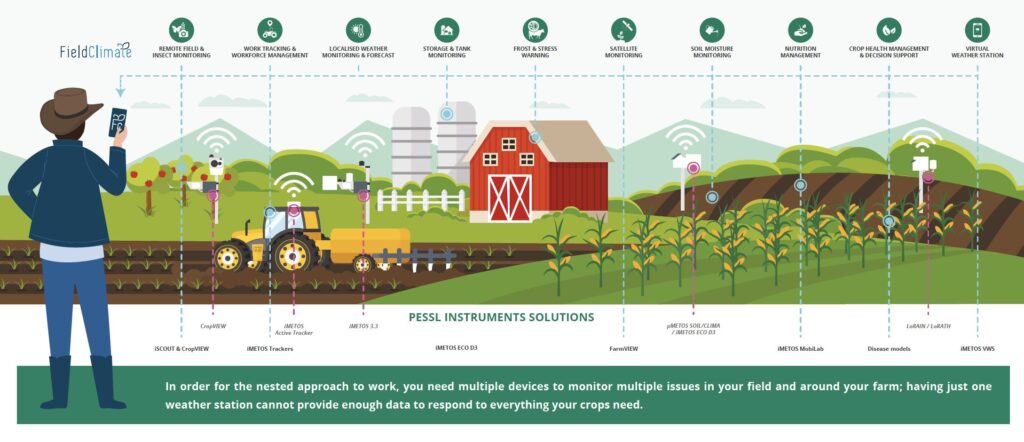We all know that climate change is impacting us in many ways, but for farming this impact is increasing the uncontrollable day-to-day weather risk that farmers face in the short term.
Climate Change (Variability)
In the fourth installment of Farm Weather Talk, we discussed the importance of soil moisture for crop development and yield. In this installment we are going to explore how climate change (variability) is impacting day to day farm operations through changes in weather, including soil moisture.
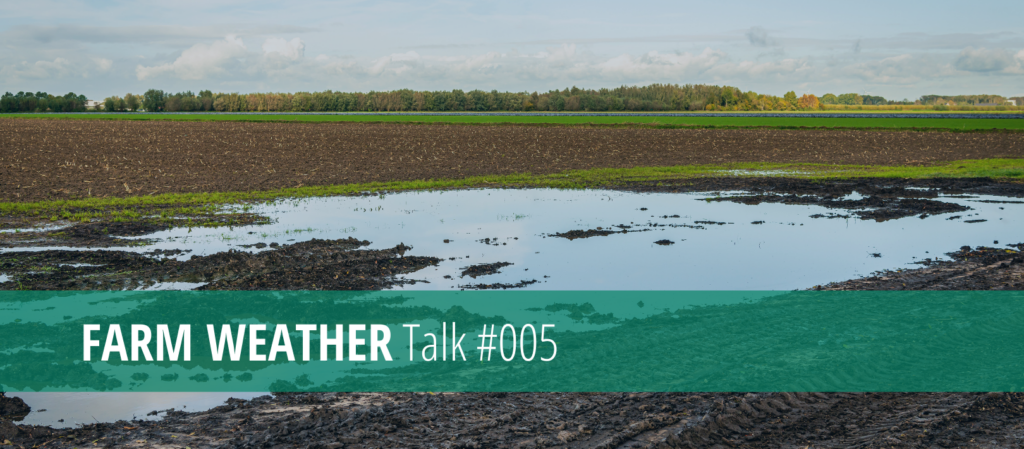

Background
We all know that climate change is impacting us in many ways, but for farming this impact is increasing the uncontrollable day-to-day weather risk that farmers face in the short term. Climate is of course the long-term expression of weather over a period of time (usually 30 years), while weather is the day-to-day fluctuations. It’s the climate variability (impacts on day-to-day weather) that is extremely hard to plan for in day-to-day farm operations.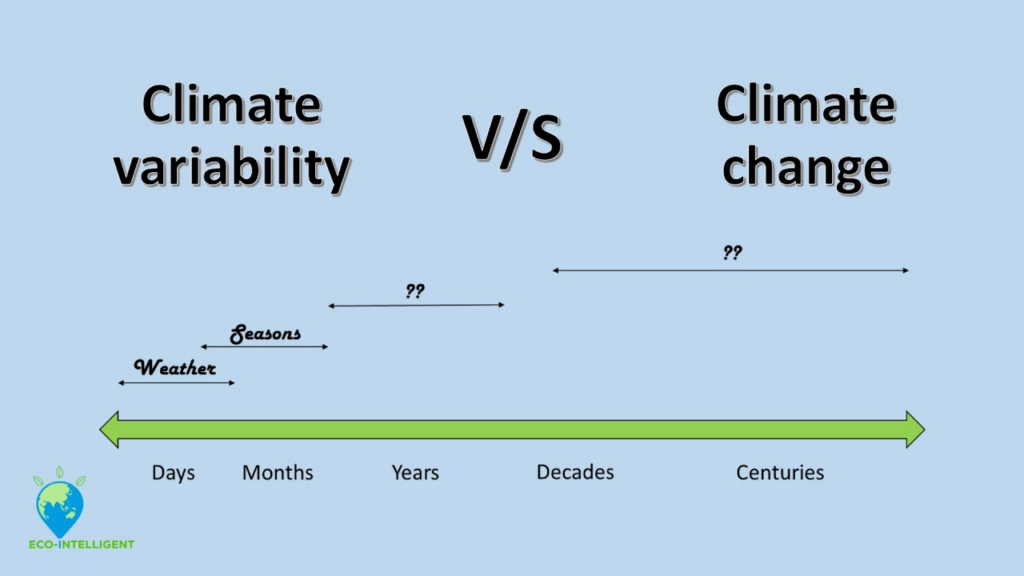

What does this mean for farm operations?
As we know, weather affects most, if not all operations on a farm, from seeding, tillage, nutrient applications, spray decisions, harvest, livestock management, feed rations, etc. The impacts of climate variability will differ from region to region, but below is a short summary of the potential impacts, some positive and some negative:
- Temperature increases which could add more frost-free and growing degree days that could improve yields and enable new cropping types in some regions.
- More frequent and intense storms, floods, and drought could be expected annually, increasing food production risk.
- Warmer winter temperatures could increase pest and disease pressure by improving overwintering survival of new and existing species.
- Tree fruit crops may be especially vulnerable to variable temperatures in the fall (harding off) and spring frosts. More variability in spring and fall temperatures can stress fruit trees causing blossom loss due to late frosts.
- Increased frost-free periods may provide opportunities for the expansion of warm weather crops such as corn and soybeans as well as a potential northwards expansion of agricultural production where soils permit.
- Reduced precipitation later in the growing season, coupled with increased heat will cause stress to plants and may have a negative impact on yields and quality, especially in oilseeds.
- Reduced streamflow, less snowmelt to recharge rivers and earlier peak flows could lead to reduced access to water for irrigation during the summer and greater competition for groundwater reserves from multiple industries.
- Increased temperatures and water rationing could potentially affect livestock health, resulting in reduced milk, egg, and meat production and even fatalities, increased cooling costs for producers.
- Higher CO2 levels may result in greater productivity from crops such as wheat, barley, canola, soybeans, and potatoes.
- Combined with higher summer temperatures, increased evapotranspiration, variable rainfall amounts will impact soil moisture levels for crop development and yield.
As the image suggests, the development of new technologies will help offset some of the changes with climate variability and offer new opportunities. One such technique is digital or IoT agriculture, which can provide accurate and timely information for multiple management decisions: seeding, spray timing, nutrient requirements, pest control, disease management, work planning, and livestock health. These digital or IoT tools connect the field-farm with timely and trusted information, which provides solutions for better management, optimizing inputs and reduced risk. (Images below)
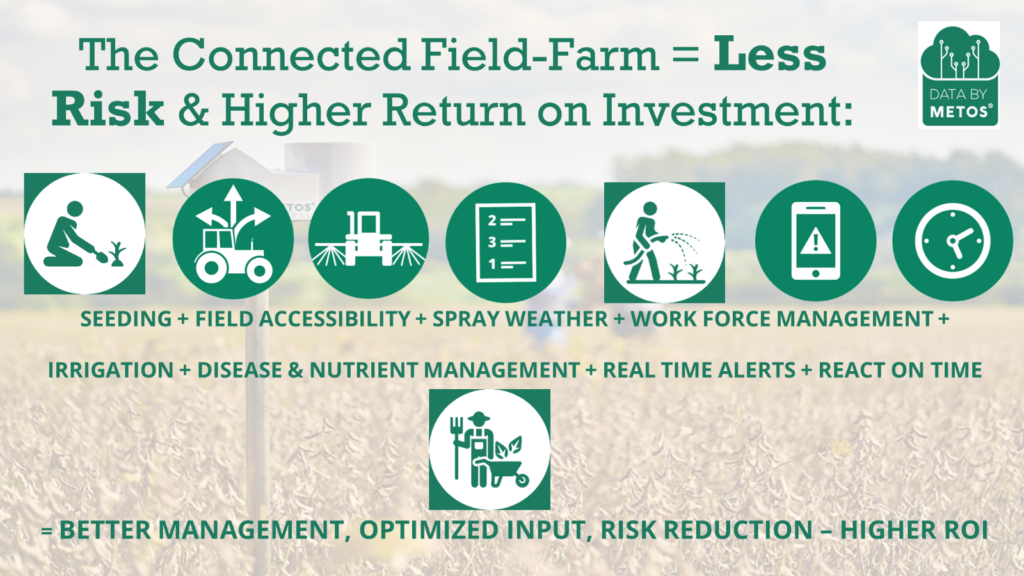

Case Example of Climate Change Variability and Nutrient Management
The year of 2021 in Western Canada was characterized by extreme dryness and warm to hot temperatures. Yields on most crops took a hit because of the lack of stored soil moisture and timely rains. The fall also saw a continuation of dry and warm conditions, providing little recharge to soil moisture levels. The winter of 2021 into 2022 did see some good snowfall, but as we have discussed water can be stored in the snowpack and/or lost to sublimation over the winter. In 2022 conditions switched from extreme dryness to very wet conditions, with fieldwork and planting operations slowed because of the wet conditions and some areas were not seeded because of excessive wet conditions. Timely and abundant precipitation continued throughout the growing season, which led to abundant soil moisture for higher yield potential. The graphs below clearly illustrate this change in soil moisture from 2021 to 2022.
Official precipitation reports from government weather stations in Winnipeg clearly characterizes the climate variability for the 2021 and 2022 year, where the precipitation recorded for 2022 was 766 mm, which is nearly double 2021 at 384 mm. In addition, 2022 was the wettest year on record, surpassing 1962 which had 725 mm. This is clearly an example of climate variability in action.
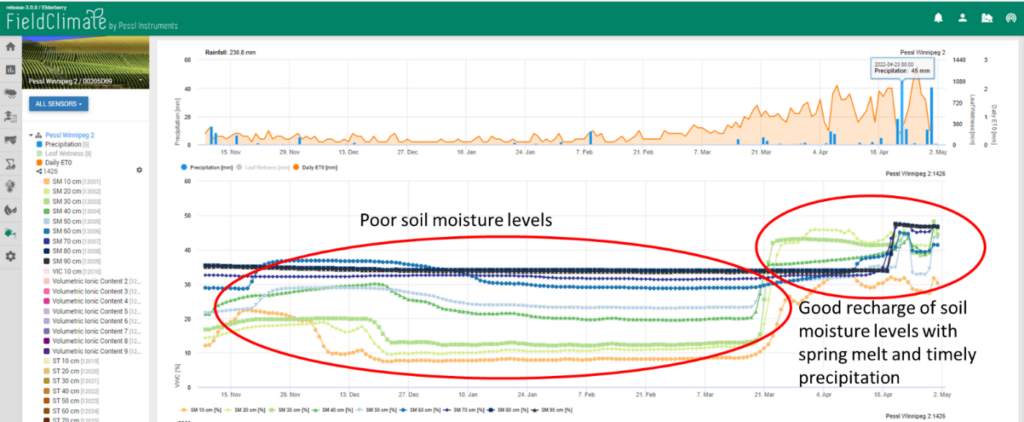

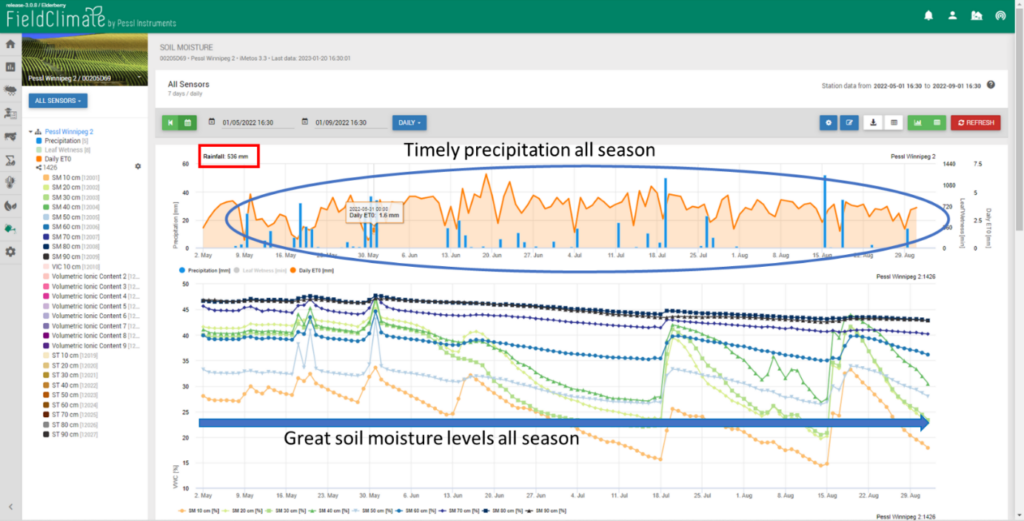

What Does this Mean for Nutrient Management?
As you can imagine, the change in yield potential from 2021 to 2022 was quite different. For example, in 2021 there was far less stored soil moisture, say 7 inches over the entire growing season, while in 2022 there was more like 14 inches of stored soil moisture. Remember each inch of stored soil water translates into so many bushels of yield for each crop. If you consider a wheat crop, this translates into 49 bu/acre yield potential in 2021, while in 2022 this is 98 bu/acre. How you manage these yearly changes in terms of nutrients is quite different, in the dry year the amount of nutrients should be far less, since the amount of soil water for yield is low, while in the wet year, more nutrients could be applied to meet the yield potential. So, how do you know what your yield potential is from year to year with climate variability? This is where a digital solution for yield prediction comes in. As the illustration shows, you can track your water driven yield day by day, and into the future based on long term normal and season forecasts. In this illustration, the yield forecast for wheat is higher than the long term normal because of the timely rains and abundant soil moisture.
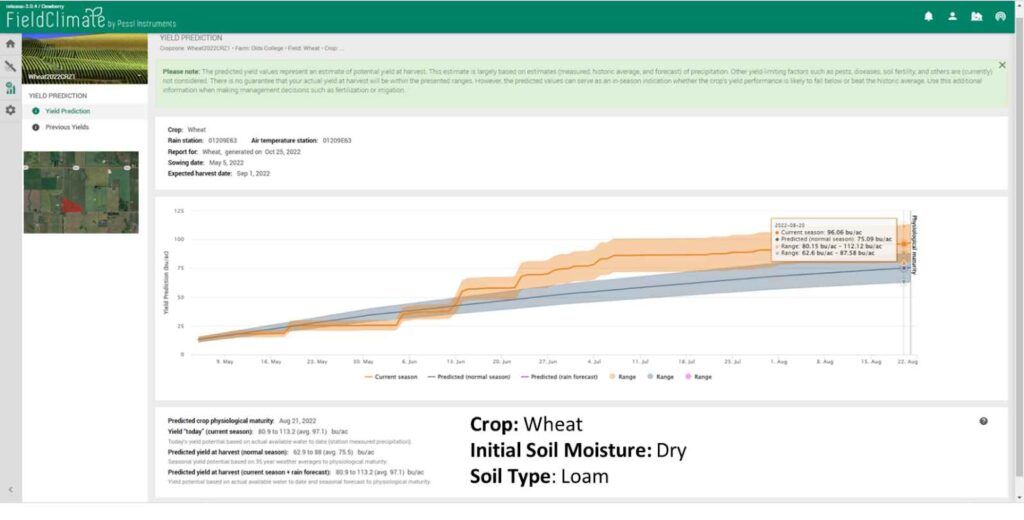

As we discussed previously, the development of new technologies will help offset some of the changes with climate variability and offer new opportunities. One such technique is digital or IoT agriculture, which can provide accurate and timely information for multiple management decisions: seeding, spray timing, nutrient requirements, pest control, disease management, work planning, livestock health and in this example yield prediction. These digital or IoT tools connect the field-farm with timely and trusted information, which provides solutions for better management, optimizing inputs and reduced risk under a changing climate.
About the Author:
Guy Ash has worked as agro-meteorologist and earth observations science specialist for the past 30 years. Currently, he is the Global Training and Key Accounts Manager in Canada for Pessl Instruments, Austria. Pessl Instrument is an IoT company that manufactures hardware (loggers and sensors) and software solutions that are focused on the agricultural sector. We work in over 85 countries and have over 70,000 devices and 700,000 sensors deployed for a wide range of agriculture applications: disease management, irrigation, soil moisture, insect traps, crop cameras, weather stations, soil fertility, etc. One of his roles is to provide global training for an extensive list of IoT solutions for a wide variety of crops – rice, wheat, soybeans, oranges, corn, canola, forages, grapes, fruits and vegetables, etc.
![]()
![]()

